
The Mayflower Compact, originally titled Agreement Between the Settlers of New Plymouth, was the first governing document of Plymouth Colony. It was written by the men aboard the Mayflower, consisting of Separatist Puritans, adventurers, and tradesmen. Although the agreement contained a pledge of loyalty to the King, the Puritans and other Protestant Separatists were dissatisfied with the state of the Church of England, the limited extent of the English Reformation and reluctance of King James I of England to enforce further reform.

Plymouth Colony was the first permanent English colony in New England from 1620 and the third permanent English colony in America, after Newfoundland and the Jamestown Colony. It was settled by the passengers on the Mayflower at a location that had previously been surveyed and named by Captain John Smith. The settlement served as the capital of the colony and developed as the town of Plymouth, Massachusetts. At its height, Plymouth Colony occupied most of what is now the southeastern portion of Massachusetts. Many of the people and events surrounding Plymouth Colony have become part of American folklore, including the American tradition of Thanksgiving and the monument of Plymouth Rock.
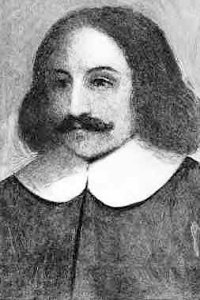
William Bradford was an English Puritan Separatist originally from the West Riding of Yorkshire in Northern England. He moved to Leiden in Holland in order to escape persecution from King James I of England, and then emigrated to the Plymouth Colony on the Mayflower in 1620. He was a signatory to the Mayflower Compact and went on to serve as Governor of the Plymouth Colony intermittently for about 30 years between 1621 and 1657. He served as a commissioner of the United Colonies of New England on multiple occasions and served twice as president. His journal Of Plymouth Plantation covered the years from 1620 to 1646 in Plymouth.

Metacomet, also known as Pometacom, Metacom, and by his adopted English name King Philip, was sachem to the Wampanoag people and the second son of the sachem Massasoit. His older brother Wamsutta briefly became sachem after their father's death in 1661. However, Wamsutta also died shortly thereafter and Metacom became sachem in 1662.

King Philip's War was an armed conflict in 1675–1676 between a group of indigenous peoples of the Northeastern Woodlands against the English New England Colonies and their indigenous allies. The war is named for Metacom, the Pokanoket chief and sachem of the Wampanoag who adopted the English name Philip because of the friendly relations between his father Massasoit and the Plymouth Colony. The war continued in the most northern reaches of New England until the signing of the Treaty of Casco Bay on April 12, 1678.

John Carver was one of the Pilgrims who made the Mayflower voyage in 1620 which resulted in the creation of Plymouth Colony in America. He is credited with writing the Mayflower Compact and was its first signer, and was also the first governor of Plymouth Colony.

John Oldham was an early Puritan settler in Massachusetts. He was a captain, merchant, and Indian trader. His death at the hands of the Indians was one of the causes of the Pequot War of 1636–37.
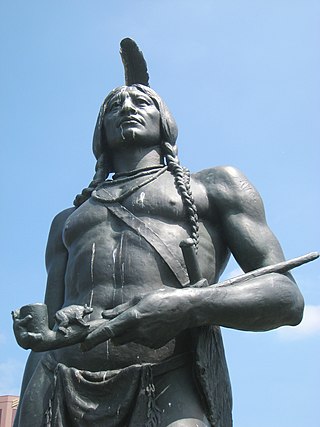
Massasoit Sachem or Ousamequin was the sachem or leader of the Wampanoag confederacy. Massasoit means Great Sachem. Massasoit was not his name but a title. English colonists mistook Massasoit as his name and it stuck.

Edward Winslow was a Separatist and New England political leader who traveled on the Mayflower in 1620. He was one of several senior leaders on the ship and also later at Plymouth Colony. Both Edward Winslow and his brother, Gilbert Winslow signed the Mayflower Compact. In Plymouth he served in a number of governmental positions such as assistant governor, three times was governor and also was the colony's agent in London. In early 1621 he had been one of several key leaders on whom Governor Bradford depended after the death of John Carver. He was the author of several important pamphlets, including Good Newes from New England and co-wrote with William Bradford the historic Mourt's Relation, which ends with an account of the First Thanksgiving and the abundance of the New World. In 1655 he died of fever while on an English naval expedition in the Caribbean against the Spanish.
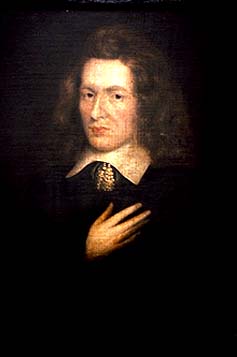
Josiah Winslow was the 13th Governor of Plymouth Colony. In records of the time, historians also name him Josias Winslow, and modern writers have carried that name forward. He was born one year after the Charter which founded the Massachusetts Bay Colony, bringing over 20,000 English immigrants to New England in the 1630s. Josiah was the Harvard College-educated son of Mayflower passenger and Pilgrim leader and Governor Edward Winslow and was Governor from 1673 to 1680. The most significant event during his term in office was King Philip's War, which created great havoc for both the English and Indian populations and changed New England forever. Josiah was the first governor born in a "New England" colony.
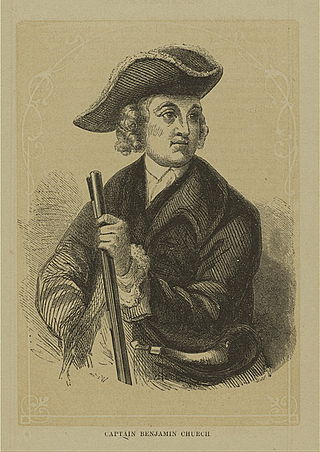
Colonel Benjamin Church was a New England military officer and politician who is best known for his role in innovative military tactics notably developing Unconventional warfare. He is also known for commanding the first ranger units in North America. Born in the Plymouth Colony, Church was commissioned by Governor Josiah Winslow to establish a company of Rangers called after the outbreak of King Philip's War. Church participated in numerous conflicts which involved the New England Colonies. A force of New Englanders led by him was responsible for tracking down and killing Wampanoag sachem Metacomet, which played a major role in ending the conflict.
John Howland was an English indentured servant who accompanied the English Separatists and other passengers when they left England on the Mayflower to settle in Plymouth Colony. In later years, he was an executive assistant and personal secretary to Governor John Carver.

Nathaniel Philbrick is an American author of history, winner of the National Book Award, and a finalist for the Pulitzer Prize. His maritime history, In the Heart of the Sea: The Tragedy of the Whaleship Essex, is based on what inspired Herman Melville to author Moby-Dick, won the 2000 National Book Award for Nonfiction and was adapted as a film in 2015.
Thomas Prence was a New England colonist who arrived in the colony of Plymouth in November 1621 on the ship Fortune. In 1644 he moved to Eastham, which he helped found, returning later to Plymouth. For many years, he was prominent in Plymouth colony affairs and was colony governor for about twenty years, covering three terms.

The Great Swamp Massacre or the Great Swamp Fight was a crucial battle fought during King Philip's War between the colonial militia of New England and the Narragansett people in December 1675. It was fought near the villages of Kingston and West Kingston in the Colony of Rhode Island and Providence Plantations. The combined force of the New England militia included 150 Pequots, and they inflicted a huge number of Narragansett casualties, including many hundreds of women and children. The battle has been described by historians as "one of the most brutal and lopsided military encounters in all of New England's history."

Mayflower was an English sailing ship that transported a group of English families, known today as the Pilgrims, from England to the New World in 1620. After 10 weeks at sea, Mayflower, with 102 passengers and a crew of about 30, reached what is today the United States, dropping anchor near the tip of Cape Cod, Massachusetts, on November 21 [O.S. November 11], 1620.

The New England Colonies of British America included Connecticut Colony, the Colony of Rhode Island and Providence Plantations, Massachusetts Bay Colony, Plymouth Colony, and the Province of New Hampshire, as well as a few smaller short-lived colonies. The New England colonies were part of the Thirteen Colonies and eventually became five of the six states in New England, with Plymouth Colony absorbed into Massachusetts and Maine separating from it.

William White was a passenger on the Mayflower. Accompanied by his wife Susanna, son Resolved and two servants, and joined by a son, Peregrine, on the way, he traveled in 1620 on the historic voyage. He was a signatory to the Mayflower Compact and perished early in the history of Plymouth Colony.

Susanna (Jackson) White Winslow was a passenger on the Mayflower and successively wife of fellow Mayflower passengers William White and Edward Winslow.
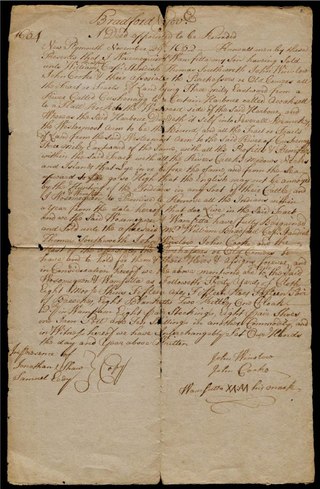
Old Dartmouth was the first area of Southeastern Massachusetts settled by Europeans. It was purchased on behalf of the Plymouth Colony in 1652 from the indigenous Wampanoag people. The lands included all of modern-day Dartmouth, New Bedford, Westport, Fairhaven, and Acushnet in current day Massachusetts, as well as parts of modern Tiverton and Little Compton In Rhode Island, an area of around 145,000 individuals in the modern area.


















